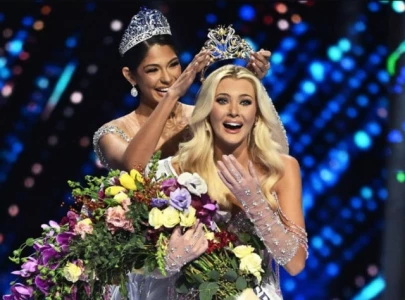
The BJP was formed when the experiment of its predecessor, Bharatiya Jana Sangh, to form a secular alliance by the name of Janata Party, succeeded in the elections but failed to consolidate. The secular allies of the right-wing outfit had complained that it had not severed ties with the Hindu extremist group Rashtriya Swayamsevak Sangh (RSS). In 1980, the Janata Party banned its members from simultaneously holding its membership and that of the RSS. As a result, the members of erstwhile Jana Sangh reconvened to form the BJP. When it had ruled India, the Janata Party government had Morarji Desai as its prime minister and Jana Sangh’s former president Atal Bihari Vajpayee as its Minister of External Affairs. Morarji Desai, the man who had once shocked Dan Rather in a television interview by sharing his bizarre drinking habits, had fashioned himself as a dove and tried to cosy up the relationship with China and Pakistan. Keep this in mind for it will define a key pattern which has caused some confusion. Vajpayee despite being a former head of the Jana Sangh was no hawk either. That is why he was replaced by a hawkish LK Advani as the party’s head in 1973.
In 1984, when the BJP first contested the general elections it performed poorly securing only two seats. Vajpayee, its first president, had tried to maintain a moderate, if not secular, profile of the party cherishing its Janata Party and Gandhian socialism links. Vajpayee offered to step aside but stayed at the helm of the affairs until 1986 when here too Advani replaced him. Under Advani the party returned to its hardline roots. And voila! It paid back, big time. The party became the face of the Babri Mosque-Ram Janambhoomi controversy. Its agitation along with the Vishwa Hindu Parishad (VHP), another lethal offspring of the RSS, brought it prominence and in the 1989 elections, from two seats in the national assembly, it expanded its footprint to 86 seats. Keep in mind that this was a highly polarising campaign and often involved violence. This too is an important pattern and should be kept in mind. VP Singh’s government could not be formed without the help of the BJP which had become a serious political force. Its hardline stance and the weak ruling coalitions at the centre were helping it gain momentum. Of course, the disguised intolerance of the Congress party and prolonged exposure of the Indian people to single-party rule also helped it a great deal.
In 1990, Advani started his Rath Yatra (chariot pilgrimage) in support of replacing Babri Mosque with a Hindu temple. While Advani was arrested, workers of his party and other RSS affiliates managed to reach the mosque site in Ayodhya and tried to bring it down. All they managed to bring down was the government as the BJP withdrew its support in parliament necessitating fresh elections. In 1992, BJP and RSS affiliates (often referred to as the Sangh pariwar) managed to tear down the mosque. Communal violence erupted resulting in the death of 2,000 people and around $3.6 billion loss to property. But this is the exact quantity of shock and awe that the BJP needed. In the 1996 general election, it became the largest party in the lower house of parliament, although shy of the number required to form a government. It formed the government for 13 days and had to leave power when it could not win the support of parliamentary majority. But shaky coalitions meant that it would get another chance. In 1998, it won with marginally better numbers. A weak coalition government was formed which would collapse in one year. But not before some more shock and awe by the BJP. Soon after assuming power under Vajpayee, the BJP government carried out nuclear tests forcing Pakistan to go nuclear. In October 1999, the BJP along with its NDA coalition regained power with a comfortable majority and stayed in power until 2004.
During this term, two curious things happened. First, an Indian Airline plane, IC 814, traveling between Kathmandu and New Delhi was hijacked. It touched down in Amritsar, then Lahore, then Dubai and finally Kandahar. Indian Intelligence Bureau chief Ajit Doval flew to the Taliban-governed Kandahar to end the hostage crisis. He ensured the release of three men in Indian custody namely Masood Azhar, Ahmed Omar Saeed Sheikh and Mushtaq Zargar in exchange for the hostages. This swap was quite curious because Doval claims to be undefeated in all other intelligence ops. The identity of the hijackers was never revealed as they took a member of the Taliban hostage for the safe passage. Sheikh’s subsequent murder of Daniel Pearl became putty in the hands of the Indian propaganda machine. You need to read French Indophile Bernard Henri-Levy’s book written on the murder with the help of Indian Research and Analysis Wing to know what I mean. Azhar is conveniently linked to every other destructive activity in India or India-Occupied Kashmir, including Pulwama, at the most inconvenient moments for Pakistan. Doval is now India’s national security adviser.
The second curious incident was the communal violence in Gujarat in 2002 in which over 2,000 Muslims were killed. The chief minister at the time, Narendra Modi, is now India’s PM. The police officer and witness who accused Modi of ordering the administration to look the other way when Muslims were being killed in Gujarat now rots in jail on trumped-up charges. More shock and awe for you. Another complicating factor is the greed of Indian crony capitalists like Ambani brothers, Adani and others. Today, Modi’s grip on power is weakening but not because of his disastrous economic policies. He is losing traction because the BJP’s voter expects more kills and even more outrageous leaders. To many, Yogi Adityanath, the chief minister of UP, is such a star heir apparent.
What does it all tell you? That intolerance in India keeps growing every day. That a sizeable chunk of Hindu voter is tethered to the RSS and its Hindutva ideology. That Advani and Modi are just symbols of a decay that will only grow further. That if the BJP is allowed to grow it will bring down India’s social fabric entirely. That other parties will have to stop feeding the monster of hate just to compete with the BJP or they will be extinct soon. That in order to stay relevant, the BJP will constantly reinvent its shock and awe doctrine. That the Pakistani leaders should stop letting the memory of Desai and Vajpayee cloud their judgment because the new lot will never want peace with Pakistan. And that the RSS is the actual heart of darkness which continues to destroy what is good in India.
Published in The Express Tribune, February 23rd, 2019.
Like Opinion & Editorial on Facebook, follow @ETOpEd on Twitter to receive all updates on all our daily pieces.












COMMENTS (1)
Comments are moderated and generally will be posted if they are on-topic and not abusive.
For more information, please see our Comments FAQ